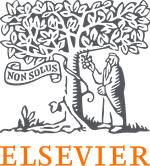Patrimony and imaginaries of cybernaut: an approach to the former Hacienda Santa María of Rosario
DOI:
https://doi.org/10.29105/contexto16.24-362Keywords:
Netnography, Patrimony, Urban ImaginariesAbstract
At the end of the XVIII century, what was then called Hacienda Santa María of Rosario became an important site on the Camino Real and Los Tejas, a route of economic and cultural significance that contributed to the integration of the capital of New Spain with the unexplored northern territory. Currently located in the Municipality of Ramos Arizpe, Coahuila, we find a place where we can still find valuable architectural vestiges of the hacienda. Undoubtedly, historical processes affect the current configuration of a city and one of the greatest riches of retrospective reflections lies not only in the tangible information that serves as a basis and is fundamental, but in that intangible part, that is, in the urban imaginary. The objective of this work is to recognize the urban imaginary of the Ex Hacienda Santa María of Rosario on the Internet and to know through it which architectural elements prevail and are found in the netizen's imaginary. Netnography is used as a research tool, which adapts ethnographic research techniques in the study of virtual communities. As a result, we obtained a characterization of the imaginary through the analysis of images and natural semantic networks.
Downloads
References
Acaso López-Bosch, María. (2009), El lenguaje visual. México. Ed. Paidós.
Bourdin, Alain. (2007). La metrópoli de los individuos. México. Ed. Lupus Inquisitor.
Carmona Ochoa, Gabriela. (2015), Ciudad imaginaria y sociedad virtual. Las redes sociales virtuales como medio para el análisis de los imaginarios urbanos. México. Ed. Universidad de Guadalajara-Universidad Autónoma de Coahuila.
Castells, Manuel (2004), La era de la información. El poder de la identidad. Vol. II. México. Ed. Siglo XXI.
Galván Arellano, Alejandro I. (2018), “El legado patrimonial ubicado en los bordes del desierto potosino: Conjunto Religioso de San Pedro, Guadalcázar”, en Patrimonio y ciudades de las culturas del desierto. México. Ed. Universidad Autónoma de Ciudad Juárez. Ciudad Juárez, Chihuahua. pp. 21-39
Garza Martínez, Valentina. (2012), “Medidas y caminos en la época colonial: expediciones, visitas y viajes al norte de la Nueva España (siglos XVI-XVIII)”, Revista Electrónica Fronteras de la Historia, Vol.17, No. 2, pp. 191-219. Disponible en: https://revistas.icanh.gov.co/index.php/fh/article/view/332 (Fecha de consulta: 5 de mayo de 2019) DOI: https://doi.org/10.22380/2027468858
Hiernaux, Daniel. (2007), “Los imaginarios urbanos: de la teoría y los aterrizajes en los estudios urbanos”. Revista EURE, Revista Electrónica Estudios Urbano Regionales, Vol. 33, N° 99, pp. 17-30. Disponible en: https://www.eure.cl/index.php/eure/article/view/1357 (Fecha de consulta: 24 de julio de 2019) DOI: https://doi.org/10.4067/S0250-71612007000200003
Narváez Tijerina, Adolfo Benito. (2000), Crónicas de los viajeros de la ciudad. Mendoza, Argentina. Ed. Universidad de Mendoza.
López, Isabel Rocío; Rodríguez, Ana Sofía; Sorroche, Miguel Ángel. (2018), “Análisis del estado de conservación y evaluación de la restauración en 1984 de la capilla de Santa María; Ramos Arizpe, Coahuila, México”, en Patrimonio y Ciudades de las culturas del desierto. México. Ed. Universidad Autónoma de Ciudad Juárez. Ciudad Juárez, Chihuahua. pp. 41-57
Palmer, Gabrielle G. (1999), “El Camino Real de Tierra Adentro”, en Southern New México Historical Review. Las Cruces, New México. Ed. Doña Ana County Historical Society. Volumen VI, No.1. pp. 1-6
Pérez González, M. L. (2001), “Los caminos reales de América en la legislación y en la historia”, en Revista Electrónica Anuario De Estudios Americanos, 58(1), pp. 33–60. Disponible en: https://doi.org/10.3989/aeamer.2001.v58.i1.227 (Fecha de consulta: 12 de marzo de 2019) DOI: https://doi.org/10.3989/aeamer.2001.v58.i1.227
Silva, Armando. (2006), Imaginarios Urbanos. Ed. Arango Editores. Bogotá, Colombia.
Tamez Tejeda, Antonio. (1992), Arquitectura vernácula mexicana del noreste. Tesis que en opción al grado de Maestría en Diseño Arquitectónico. Facultad de Arquitectura. San Nicolás de los Garza, N.L. Ed. Universidad Autónoma de Nuevo León, Ciudad Universitaria.
Zermeño Flores, Ana Isabel; Arellano Ceballos, Aideé Consuelo; Ramírez Vázquez, Vanessa Aideé. (2005), “Redes semánticas naturales: técnica para representar los significados que los jóvenes tienen sobre televisión, Internet y expectativas de vida.” En Revista Electrónica Estudios sobre las Culturas Contemporáneas, vol. XI, núm. 22, diciembre, pp. 305-334. Disponible en: https://www.redalyc.org/articulo.oa?id=31602207 (Fecha de consulta: 21 de marzo de 2019)
Downloads
Published
How to Cite
Issue
Section
License
Copyright (c) 2022 Gabriela Carmona Ochoa

This work is licensed under a Creative Commons Attribution-NonCommercial 4.0 International License.
The authors who publish in this journal accept the following conditions:
1. The authors keep the copyright and give the journal the right of the first publication, with their content registered under the Creative Commons License, which lets third parties to use the published material as long as they mention the authors and the first publication from the journal.
2. The authors can make other independent and additional contractual agreements for the non-exclusive distribution of the version of the article published in the journal (for example an institutional repository or a book) provided that they explicitly mention that the content was first published in CONTEXTO. Revista de la Facultad de Arquitectura de la Universidad Autónoma de Nuevo León..














.png)





